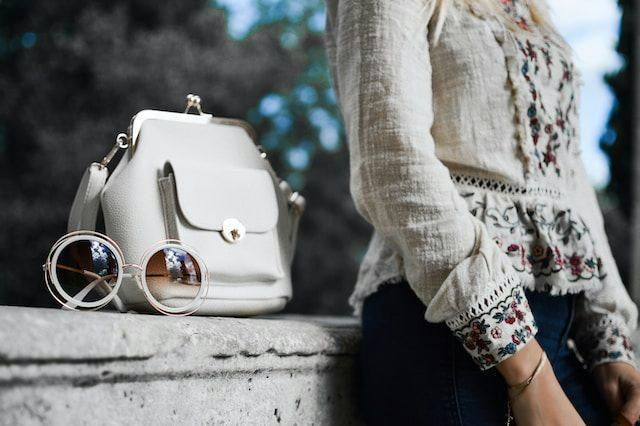Introduction
Do you ever wonder about the intriguing worlds of art and fashion? These two worlds have become inextricably linked in various ways, and their relationship is genuinely multifaceted. Skill and style are not only about aesthetics; they also significantly impact modern culture.
This article will look at the numerous facets of the link between the art world and the fashion world, such as their historical, cultural, and commercial components. So brace yourself for an exhilarating adventure into the crossroads of art and fashion!
History Connecting Art and Fashion
Let’s go back in time and look at the rich historical ties between art and fashion! These two worlds have had a significant impact on each other throughout history. Art styles such as Art Nouveau, Bauhaus, and the Renaissance affected not only the world of art but also fashion trends.
Art Nouveau, for example, prompted fashion designers to incorporate elaborate and flowing motifs onto clothes, accessories, and even jewelry. The Bauhaus movement’s clean lines and minimalist aesthetics greatly affected fashion, creating contemporary and practical clothing designs.
The magnificent style of the Renaissance era, captured in innumerable pictures and paintings highlighting the delicate intricacies of that time’s clothing and accessories, has been a significant part of art and fashion history.
People have portrayed historical fashion in different art media, such as portraits and paintings, in addition to art movements. These art pieces provide views into the history of fashion by displaying the styles, textiles, and fashionable accessories during various times.
They serve as historical archives and demonstrate the close link between art and fashion since painters frequently depicted contemporary apparel in their works.
Cultural Influence of the Immersion of Art and Fashion
These two realms are about more than just aesthetics; they reflect and influence our culture’s norms, values, and identities.
People have used fashion to effectively communicate social, political, and cultural ideas for a long time. Clothing and accessories are more than simply something we wear; they also serve as a means for us to express our views, ideals, and even our identities.
Fashion can send powerful messages and establish a signature once somewhere, from wearing traditional items to signify cultural history to bold sporting pieces that make a social or political statement.
Furthermore, art has been essential in questioning established fashion standards and pushing limits. Artists have utilized their creativity and ingenuity to challenge the existing quo, forcing fashion to grow and adapt to shifting cultural environments.
Art has served as a catalyst for change in the fashion business, from innovative fashion designs that question established gender roles to art-inspired fashion collections that blur the borders between art and fashion.
The Commercial Aspect
In addition to the artistic components, economic and commercial factors are also important.
Collaborations between art and fashion are becoming more widespread in the modern fashion business. Artists and fashion houses frequently collaborate to create signature collections that combine the worlds of art and fashion. These partnerships not only result in one-of-a-kind and limited-edition items, but they also generate buzz and excitement among customers.
These art-inspired fashion collections and collaborations contribute to brand positioning, marketing tactics, and aesthetics. Fashion businesses frequently use artists’ creative abilities and distinct styles to develop unique items that set them apart from the competition. Hence, this aids in creating a distinctive brand signature and increases customer brand awareness and loyalty.
The confluence of art with fashion may result in highly desirable and exclusive items that fetch premium market pricing, adding to both sides’ economic sustainability.
The Contemporary Realm: Trends and Innovations
The junction of these two worlds is constantly growing, with fascinating trends and discoveries pushing the edges of what is possible.
Wearable technology is one such trend in which fashion and technology combine to produce novel and valuable clothes and accessories. Wearable technology is transforming the fashion business and pushing the bounds of creativity, from intelligent materials that monitor health to interactive garments that adapt to the environment.
Another prominent trend is sustainable fashion, which combines art and fashion to promote environmentally responsible behaviors and social responsibility. Sustainable fashion is gaining traction as a powerful force for positive change in the fashion industry, from upcycling and repurposing materials to adopting sustainable textiles and production practices.
Art installations at fashion shows are also becoming more popular, with artists producing immersive experiences that combine art, fashion, and technology. These installations offer a one-of-a-kind and interactive approach to present fashion collections, pushing the frontiers of innovation and engaging people in novel and exciting ways.
Furthermore, one needs to consider the influence of digital media and technology on the link between art and fashion. The internet landscape has opened new avenues for artists and fashion designers to cooperate, promote their work, and reach a larger audience.
Wrap up
As we conclude, it is clear that the link between art and fashion is still vital and significant in today’s culture. The marriage of art and style continues to push the frontiers of creativity, innovation, and defining the fashion industry’s landscape.
Ultimately, the delicate connection between art and fashion is a fascinating subject that will continue to inspire and enchant us in the coming years. The link between art and style is a rich and dynamic tapestry that will continue to alter and reinvent the fashion industry for years to come, from historical ties to cultural importance, commercial dynamics, and present trends.


Comments are closed.